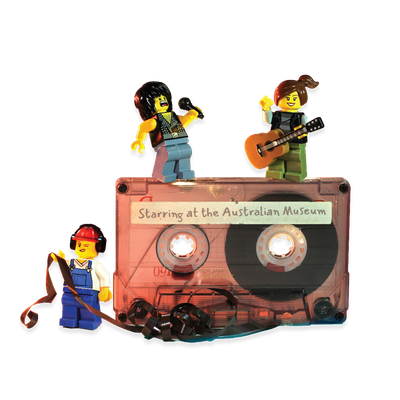Your search returned 38 results
By Page Type
By Tag
- All
- fish (966)
- blog (696)
- fishes of sydney harbour (401)
- First Nations (297)
- Blog (236)
- AMRI (169)
- archives (164)
- Eureka Prizes (145)
- Aboriginal and Torres Strait Islander (135)
- insect (126)
- Ichthyology (124)
- geoscience (109)
- minerals (102)
- climate change (98)
- podcast (94)
- Fish (91)
- Anthropology (89)
- International collections (80)
- Minerals Gallery (78)
- wildlife of sydney (78)
- Labridae (77)
- frog (73)
- gemstone (70)
- photography (65)
- history (63)
- Mollusca (60)
- gem (59)
- staff (59)
- Birds (56)
- Gems (56)
- Indonesia (56)
- education (55)
- shark (55)
- AMplify (54)
- people (53)
- earth sciences (50)
- past exhibitions (50)
- exhibition (49)
- Gobiidae (48)
- sustainability (46)
- Pomacentridae (45)
- Serranidae (44)
- lifelong learning (42)
- science (42)
- Earth and Environmental Science (41)
- Syngnathidae (41)
- Ancient Egypt (40)
- Bali (40)
- bird (40)
- dangerous australians (40)
-
Soils
https://australian.museum/learn/minerals/shaping-earth/soils/Soils are made up of three layers and are thickest where they are older and in warm and wet environments.
-
Volcanic rocks
https://australian.museum/learn/minerals/shaping-earth/volcanic-rocks/Volcanic rocks are divided into three main types: basaltic, volcaniclastic and pyroclastic.
-
Crystallography
https://australian.museum/learn/minerals/what-are-minerals/crystallography/Minerals can be identified by the shape of their crystals: called crystallography. External crystallography measures the outside properties of crystals such as length of crystal surfaces and the angles between these surfaces.
-
Classification of sedimentary rocks
https://australian.museum/learn/minerals/shaping-earth/classification-of-sedimentary-rocks/Sedimentary rocks are classified according to the predominant grain size present, as well as by their mineral content.
-
Shaping the Earth
https://australian.museum/learn/minerals/shaping-earth/What makes the Earth unique? Where does it fit in the Solar System and, ultimately, the universe? Take a look inside the Earth and find out what it is made from and how it is structured. Look at the processes that shape the Earth.
-
Geological deposits and resources
https://australian.museum/learn/minerals/geological-deposits/Geology is an important part of our economy and industry.
-
Metamorphic processes
https://australian.museum/learn/minerals/shaping-earth/metamorphic-processes/Most minerals are only stable at particular temperatures and pressures, so changes in these result in the formation of new minerals.
-
Jenolan Caves Minerals
https://australian.museum/learn/minerals/shaping-earth/mineralogy-collection-jenolan-caves-minerals/The Jenolan Caves are one of the premier tourist attractions of New South Wales. Nine caves are regularly shown to visitors, but several hundred of various sizes are known from the area.
-
The Sydney Basin
https://australian.museum/learn/minerals/shaping-earth/the-sydney-basin/The Sydney Basin is a major structural basin containing a thick Permian-Triassic (290 Ma - 200 Ma (million years old)) sedimentary sequence that is part of the much larger Sydney-Gunnedah-Bowen Basin.
-
Types of metamorphism
https://australian.museum/learn/minerals/shaping-earth/types-of-metamorphism/There are several different types of metamorphism, including dynamic, contact, regional, and retrogressive metamorphism, that form and shape rocks.
-
Discover more
2025 Australian Geographic Nature Photographer of the Year
Special exhibition
Now open -
Discover more
Unfinished Business
Special exhibition
Opens 1 November -
Discover more
Wansolmoana
Permanent exhibition
Open daily -
Find out more
Burra
Permanent kids learning space
10am - 4.30pm![]()
-
Discover more
Minerals
Permanent exhibition
Open daily![]()




